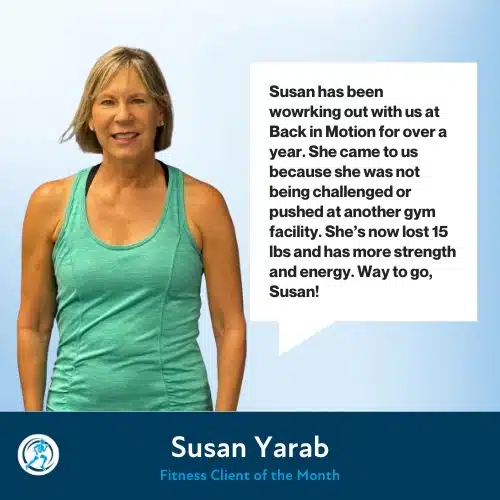July 2025
The Real Reason Your Plantar Fasciitis Keeps Coming Back
A Personal Note from Dr.Scott:

A Personal Note from Dr. Scott
Are You Really Free?
Every year, we celebrate the 4th of July with fireworks, cookouts, and flags waving high — a symbol of freedom, independence, and the ability to live life on our own terms.
But here’s the question I want to ask you this month:
Are you really free?
Because if pain, stiffness, fear of getting hurt, or a body that just doesn’t move the way it used to is calling the shots in your life… that’s not freedom.
If you’re turning down hikes, skipping workouts, avoiding travel, or simply not feeling like yourself anymore — then your body has quietly taken over the decisions your heart wants to make.
Here’s the good news: it doesn’t have to stay that way.
Whether it’s stubborn foot pain like plantar fasciitis, or the weight that just won’t come off no matter how hard you try — there is a better way forward. A way that doesn’t rely on guesswork, generic advice, or more medications.
At Back In Motion, we believe your independence matters. Not just on holidays — but every day. And we’re here to help you reclaim it.
So this month, while you’re watching those fireworks light up the sky, take a moment to ask yourself:
What would freedom really look like for me — and what’s one step I can take to move closer to it?
To your health and freedom,
Dr. Scott Gray
Article of the Month
The Real Reason Your Plantar Fasciitis Keeps Coming Back
(Hint: It’s Not Just About Your Feet)
You’ve tried everything.
Icing. Stretching. Orthotics.
Maybe even cortisone injections.
And for a little while, your foot felt better.
But then… the pain came back.
That familiar sharp, stabbing heel pain — especially in the morning or after long periods on your feet — returns with a vengeance. And the cycle starts all over again.
If this sounds like your story, you’re not alone.
And more importantly — you’re not broken.
You’ve just been treated for the symptom, not the source.

Most Plantar Fasciitis Treatments Are Too Narrow
When most people hear “plantar fasciitis,” they automatically think about the foot — because that’s where the pain is. So naturally, most treatment plans target the foot itself:
- Arch supports or orthotics
- Icing and rest
- Night splints
- Stretching the calves or plantar fascia
- Taping and massage
These things might provide temporary relief. But here’s the problem:
They rarely address why the plantar fascia was overloaded in the first place.
Until you fix that, the pain will keep coming back — or never fully go away.
The Kinetic Chain: Why the Problem Starts Above Your Foot
The human body is a connected system. What happens at your hips or knees directly affects how your foot moves and absorbs force.
This is called the kinetic chain — a term used to describe how one joint affects the next in a coordinated sequence of movement.
Think about walking or running:
- Your glutes and hip rotators control your leg’s alignment
- Your knee stabilizes your stride
- Your foot and ankle absorb whatever the joints above send down
If your hips or knees aren’t doing their job properly, the plantar fascia ends up handling more load than it’s designed to — and over time, it breaks down.
Common Biomechanical Causes of Recurring Plantar Fasciitis
Weak Glutes and Poor Hip Control
When the glute medius and hip rotators are weak, your leg tends to collapse inward (internal rotation). This causes excessive pronation — or flattening — of the arch. Your foot becomes unstable, and the plantar fascia stretches repeatedly with every step.
Tight Hip Flexors and Poor Pelvic Control
Tight hips throw off your stride and limit proper push-off mechanics, forcing the foot to overwork during gait. It’s like driving a car with misaligned tires — the wear and tear show up in the wrong place.
Poor Single-Leg Stability
If your body can’t balance and stabilize on one leg (which happens constantly when walking or running), you compensate by over-gripping the ground, leading to overuse of the plantar fascia.
Knee Instability or Misalignment
When the knee collapses inward (valgus), it causes a chain reaction: the arch collapses, the heel turns outward, and the fascia stretches excessively.
The result?
Heel pain that just won’t quit — no matter how many times you stretch your calves.
Why Traditional PT Often Misses This
At Back In Motion, we see this mistake all the time:
Patients who’ve been through weeks of therapy — but nobody ever looked above the ankle.
If your treatment has only focused on your foot, you’ve only received part of the story.
This is why we use the Gray Method™, our signature full-body approach that detects the true cause of pain — not just where it hurts.
We don’t guess. We assess.
And more often than not, the root of your plantar fasciitis is in your hips, knees, or overall movement pattern — not just the bottom of your foot.
How Sports Physical Therapy Solves the Real Problem
This is where a performance-based approach to rehab makes all the difference.
We use principles of sports physical therapy to restore your body’s natural movement from the top down. That means assessing how your hips, knees, and feet are moving together, not in isolation.
A proper rehab plan should include:
- Gait and movement analysis
- Hip and core strength training
- Dynamic balance and single-leg stability work
- Manual therapy to restore joint motion and tissue mobility
- Progressive loading of the plantar fascia — safely and strategically
This approach doesn’t just give you relief — it helps you move better long-term so the pain doesn’t come back.
What Real Plantar Fasciitis Treatment Looks Like
Here’s what you can expect when you work with our team:
1. Movement Assessment
We evaluate your entire lower body — not just your foot. How does your hip rotate? Does your knee collapse inward? Do you overpronate when you walk or run?
2. Customized Strength & Mobility Plan
We target the specific imbalances causing your foot to overwork — often starting at the hip and pelvis, not the foot itself.
3. Manual Therapy
Our hands-on treatments reduce pain, restore tissue mobility, and improve how your joints move so your foot isn’t doing all the work.
4. Foot Mechanics & Gait Retraining
We teach you how to walk and move in a way that reduces strain on your plantar fascia.
5. Return-to-Activity Programming
Whether you’re a runner, hiker, golfer, or weekend warrior — we help you get back to what you love, pain-free and stronger than before.
Who This Works For
This full-body approach helps:
- Adults who want to stay active without recurring foot pain
- Runners or athletes who’ve been sidelined
- Women 50+ who are tired of waking up with heel pain
- Anyone who’s been told they “just need better shoes”
- Patients who’ve tried traditional PT, orthotics, or injections — without success
If you’ve had plantar fasciitis treatment before and no one ever looked at your hip, knee, or how you walk — then the job wasn’t finished.
Your Foot Pain Isn’t the Real Problem — But We Can Help
Plantar fasciitis is frustrating. But when you understand that the problem is often higher up the chain — not just in the foot — you unlock real, lasting relief.
At Back In Motion, we specialize in fixing the cause, not just the symptom.
If your pain keeps coming back, don’t wait until it becomes chronic.
Learn more about our plantar fasciitis treatment, or schedule a full-body movement evaluation with our team of experts to finally get answers — and a real plan that works.
Staff Spotlight
Staff Spotlight – Meet Oliver Gray

Oliver Gray, the spirited standard poodle, sports a striking red coat that turns heads wherever he goes, its vibrant hue gleaming like a sunset. Often mistaken for a golden doodle due to his luxurious, curly locks, Oliver is a proud, full-blown poodle, embodying the breed’s elegance and intelligence with every prance. His fiery coat only amplifies his larger-than-life personality, making him the ultimate showstopper. Devoted to his mom and dad, he showers them with affection, his soulful eyes lighting up at their every word. Long walks are his playground, where he struts with flair, chasing his beloved ball with boundless enthusiasm. Swimming is his true passion, as he dives into pools or lakes, his red coat shimmering in the water like a crimson wave.
At mealtime, Oliver’s heart belongs to eggs with cheese, which he devours with a gusto that rivals a gourmet critic. At Back in Motion, he’s the star greeter, charming patients with his wagging tail and magnetic presence, thriving as the center of attention. Though his red coat may spark doodle confusion, Oliver Gray is unmistakably a pure poodle, stealing hearts with his vibrant spirit and undeniable poodle pride!
Oliver’s Healthy Recipe

Oliver’s Corner Recipe: Grilled Lemon Herb Chicken Skewers with Veggies

Grilled Lemon Herb Chicken Skewers with Veggies
A clean, protein-packed crowd-pleaser — without the heavy sauces or sugar-laden marinades.
Ingredients:
- 1.5 lbs boneless skinless chicken breast, cut into 1-inch cubes
- 1 red bell pepper, cut into chunks
- 1 zucchini, sliced into thick rounds
- 1 red onion, cut into wedges
- 1 yellow squash, sliced
- 2 tbsp olive oil
- Juice of 1 lemon
- 3 cloves garlic, minced
- 1 tsp dried oregano
- 1 tsp dried thyme
- Salt & pepper to taste
- Optional: chopped fresh parsley for garnish
Ingredients
Marinade Instructions:
- In a bowl, whisk together olive oil, lemon juice, garlic, oregano, thyme, salt, and pepper.
- Add chicken to the marinade and toss to coat. Cover and refrigerate for at least 30 minutes (or up to 4 hours for deeper flavor).
Skewer & Grill:
- Preheat grill to medium-high heat.
- Thread marinated chicken and vegetables onto skewers, alternating for color.
- Grill skewers for 10–12 minutes, turning occasionally, until chicken is cooked through and lightly charred.
Serve With:
- Quinoa, cauliflower rice, or a leafy green salad
- A dollop of Greek yogurt mixed with lemon zest and herbs for dipping
Why It’s Great for You:
- High in lean protein
- Loaded with fiber and antioxidants
- Low in sugar and processed ingredients
- Easy to scale up for guests
Fitness Corner
The Truth About Fat Loss After 50: What’s Really Going On With Your Body
If you’ve hit your 50s and feel like losing fat has become frustrating, confusing, or downright impossible — you’re not imagining it.
Your body does change with age. But that doesn’t mean fat loss is off the table.
It just means the rules are different — and it’s time to stop blaming willpower and start understanding physiology.
Here’s what’s really going on with fat loss after 50 — and what you can do about it.

1. Hormones Shift — and So Does How Your Body Stores Fat
After 50, both men and women experience a natural decline in sex hormones, which play a major role in how your body stores and burns fat.
For Women:
Estrogen levels drop during perimenopause and menopause. This causes fat to shift from the hips and thighs to the abdomen, increasing visceral fat — the type that wraps around internal organs and raises health risks.
Lower estrogen also impacts insulin sensitivity, making your body more prone to storing fat after meals, especially when eating refined carbohydrates.
For Men:
Testosterone starts to decline around age 40–50. This hormone helps preserve muscle mass and burn fat. As levels dip, men may notice more fat gain around the midsection and a drop in energy and strength.
2. Muscle Mass Decreases — Which Lowers Your Metabolism
After age 30, most adults lose about 3–8% of muscle mass per decade. That process speeds up after 50 unless actively countered through strength training.
Here’s why that matters:
- Muscle burns more calories at rest than fat
- Less muscle = a slower metabolism
- A slower metabolism means you can gain fat even if you’re eating the same amount
This is why the same diet or exercise routine that worked in your 30s doesn’t get the same results now. Your metabolic engine has changed — but it’s not broken.
3. Recovery, Stress, and Sleep Matter More Than Ever
The nervous system becomes less resilient to stress after 50. Combine that with modern life (work, caregiving, poor sleep), and many adults stay stuck in a chronic stress state — high cortisol, poor blood sugar regulation, and stalled fat loss.
Sleep also becomes more fragmented with age. And studies show that even one night of poor sleep can disrupt hunger hormones and lead to overeating the next day.
Fat loss after 50 isn’t just about what you do in the gym — it’s about how you recover.
4. You Can’t Just Cut Calories — You Need to Fuel Smarter
Starving yourself doesn’t work. It usually backfires.
Restrictive diets can cause muscle breakdown, slow your metabolism even further, and disrupt your hormones — especially in women. What you need is a strategic approach that:
- Prioritizes protein to preserve and build muscle
- Includes fiber-rich carbs to support energy and digestion
- Uses nutrient timing to support blood sugar control
- Doesn’t leave you tired, moody, or craving sugar
Your body still wants to be lean and healthy — but it needs the right kind of fuel to get there.
5. Strength Training Becomes Non-Negotiable
If you’re still relying on long cardio sessions or high-intensity bootcamps to lose fat, you might be doing more harm than good.
At this stage of life, strength training is essential — not optional. It:
- Builds and preserves lean muscle
- Revs up metabolism
- Supports joint and bone health
- Improves insulin sensitivity
- Increases fat burning, even at rest
And you don’t need to lift like a bodybuilder. Smart, progressive training 2–4 times per week — with a focus on form, function, and consistency — is the secret.
6. The Right Program Makes All the Difference
The problem isn’t your age. It’s the one-size-fits-all plans that don’t work for your biology anymore.
At Back In Motion, we specialize in helping men and women 50+:
- Burn fat safely without injury
- Rebuild strength and energy
- Regain confidence in how they move, eat, and live
Our programs are built by medical and performance professionals who understand how to balance fat loss, hormonal health, and injury prevention.
Because looking better doesn’t matter if you feel broken in the process.
Bottom Line: You’re Not Stuck. You Just Need a Smarter Strategy.
Fat loss after 50 is possible — but it’s not about working harder. It’s about working smarter with your biology, not against it.
Understand the physiology. Train with intention. Eat to fuel your body, not deprive it. And above all, stop falling for quick-fix plans that were never designed for you in the first place.
You still have time to feel stronger, leaner, and more alive than you have in years.
If you’re ready for a plan that works — and a team that gets it — we can help.
Click here to schedule a free consultation and discover how we help adults 50+ lose fat, gain strength, and feel in control again — safely and effectively.
Try This at Home
The Marching Core Test
Want to know if your core is actually doing its job — or just along for the ride?
Here’s a simple test we use in the clinic to spot compensation and weak core control in seconds.
Marching Core Test:
- Lie on your back with your knees bent and feet flat on the floor.
- Place one hand under your lower back — you should feel a small space.
- Engage your core (gently flatten that space) and slowly lift one foot a few inches off the ground — like a slow marching motion.
- Lower the foot and switch sides.
What to watch for:
- Does your back arch or flatten drastically?
- Does your belly push out or grip tightly?
- Do you feel your hip flexors or lower back working more than your abs?
If yes — your core may not be stabilizing properly. And that could be contributing to your back, hip, or knee pain.
Staff Spotlight
Meet Dr. Fernanda Paulsen- Pelvic Health Therapist

Dr. Fernanda Paulsen earned her Doctorate in Physical Therapy from the University of St. Augustine for Health Sciences, building upon a rich foundation that includes a Master of Science in Yoga Therapy from the Maryland University of Integrative Health, a law degree from Brazil, and undergraduate studies in Kinesiology at the University of Hawaii. While at Hawaii, she also explored her passion for movement through academic coursework in dance. Fernanda is a Certified Yoga Therapist (C-IAYT) and E-RYT 500 Yoga Teacher with over 1000 hours of training, blending scientific and holistic approaches in her work. Her academic path reflects a lifelong dedication to understanding the human body, movement, and wellness through both Western and Eastern lenses.
Dr. Fernanda brings a unique and integrative perspective to pelvic health, shaped by years of hands-on experience as a licensed massage therapist and yoga therapist at Hawaii Naturopathic Retreat Center. She has pursued advanced continuing education through Herman & Wallace to stay at the forefront of pelvic health care.
Outside of the clinic, Dr. Fernanda enjoys CrossFit, running and yoga, and treasures time spent with her two daughters. She is excited to serve the Fort Myers community, where she has deep family roots and long-standing relationships.
Favorites:
Place: beach
Food: Steak
Vacation Spot: Brazil
TV Show: Outlander
Film: Braveheart
Guilty Pleasure Song: I’ll be there for you, Bon Jovi
Celebrity: Russell Brand
Book: Bible
Sport: CrossFit
Team: Brazil’s soccer
Hobbies: Yoga and Aerial Silks
Fitness Client Of The Month
Client Case Study of the Month
Client Case Study of the Month – Sierra

When Sierra first came to us, she was frustrated, exhausted, and honestly—starting to lose hope.
She had been living with chronic lower back pain and sacroiliac (SI) joint pain for almost a year. She tried massage, rest, and even some traditional physical therapy, but nothing made a lasting difference. Every time she tried to return to exercise or simply keep up with her busy life, the pain flared back up.
But after taking her through a detailed movement evaluation, we found something that others had missed.

Events of the Month
Events of the Month – July Highlights
We’ve got an exciting month ahead at Back In Motion! Mark your calendars and don’t miss your chance to learn, give back, and get rewarded:
💪 Fitness Workshop
Date: Wednesday, July 23rd
Topic: How to Improve Your Metabolism and Burn Fat After 50 — Even If You’ve Tried Everything Else
Whether you’re struggling with low energy, stubborn weight, or a slowing metabolism, this free workshop will help you take back control.
🚶♂️ Plantar Fasciitis Workshop
Date: Saturday, July 19th
Topic: 3 Reasons Why Your Plantar Fasciitis Hasn’t Healed — and How to Fix It Naturally
If your heel pain keeps coming back, you need more than rest. Discover the root cause — and how to heal it for good.
🧡 Client Appreciation & Charity Workout
Date: Saturday, July 26th
Celebrate with us! We’re hosting a fun group workout to give back to our amazing clients and support a local cause.
Bring a friend, sweat a little, and help raise funds for things which are charity cause.
🎁 Referral Giveaway — Win a $200 Spa Gift Card!
Know someone who could use our help?
When you refer a friend this month, you’ll be entered to win a $200 gift card to Salon Spa & Aesthetics.
👉 There’s no limit — the more you refer, the more chances you have to win!
🚶♂️ 3 Secrets to Overcoming Urinary Incontinence
Without Pills, Pads, or Embarrassment
-Tired of being told it’s “just part of aging”? Join us for this eye-opening workshop where you’ll learn the real reasons bladder leaks happen—and how to fix them naturally. We’ll reveal 3 powerful secrets to regain control, confidence, and freedom without relying on medications, pads, or invasive procedures. Perfect for women who are ready to take back their lives discreetly and effectively. Don’t miss it!
👉 go.backinmotionsspt.com/3-secrets-to-overcoming-urinary-incontinence/
Testimonials

“I’m a little apprehensive about driving from Naples to Fort Myers, just physical therapy several times a week, but I’m glad I did. The outcome has been absolutely spectacular!
“

“I really like that you were more focused on getting me back in the gym because you knew that was really important to me.”



